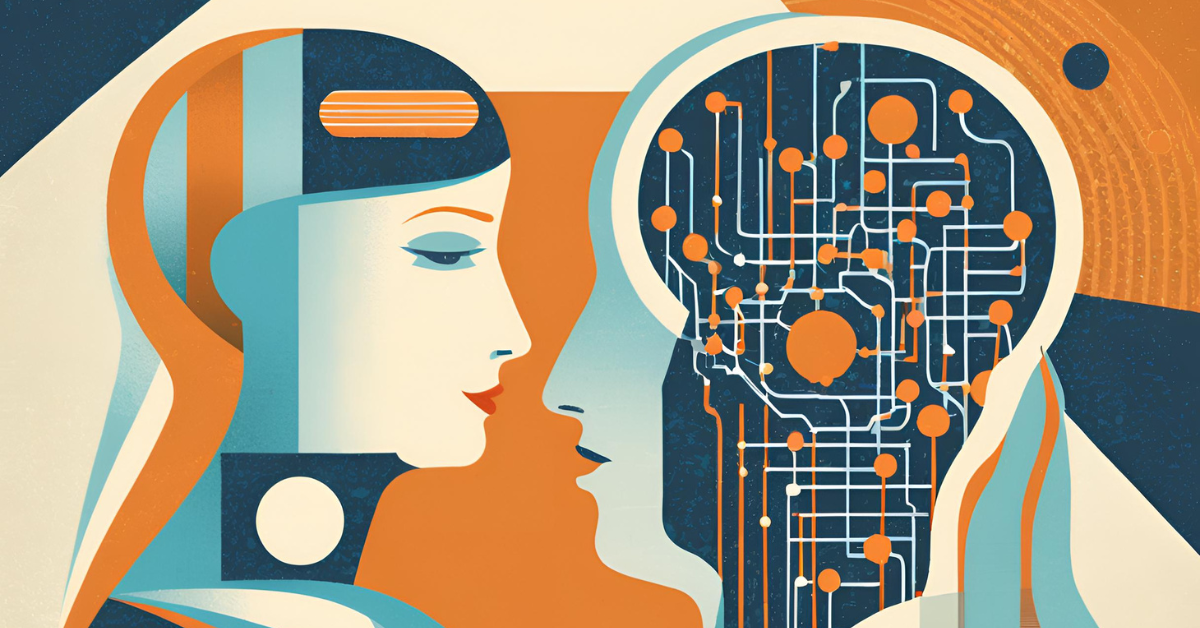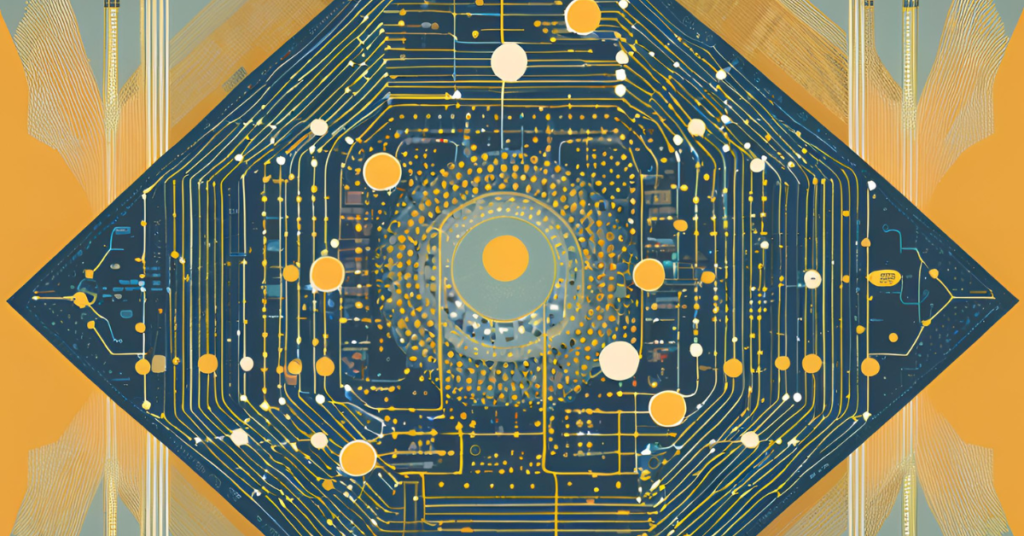 Reading Time: 6 minutes |
Reading Time: 6 minutes |

Introduction
What is Deep Learning?
Deep learning is a subset of machine learning that involves training artificial neural networks with multiple layers to analyze and learn from vast amounts of data. Unlike traditional machine learning, where feature extraction is manual, deep learning automates this process, enabling more accurate and efficient data processing.
Historical Background
The roots of deep learning trace back to the 1940s and 1950s with the development of the first neural networks. However, it wasn’t until the 1980s and 1990s, with advancements in computational power and the advent of backpropagation algorithms, that deep learning began to show significant promise. The real breakthrough came in the 2010s with the advent of powerful GPUs, large datasets, and sophisticated algorithms, leading to groundbreaking achievements in image and speech recognition.
Importance of Deep Learning in Modern Technology
Deep learning has revolutionized various fields, including healthcare, finance, transportation, and entertainment. Its ability to analyze complex patterns and make accurate predictions has made it a cornerstone of modern artificial intelligence (AI) systems.
Purpose of This Article
This article aims to provide an in-depth understanding of deep learning, covering its technical specifications, applications, benefits, challenges, latest innovations, and future prospects. Whether you’re a beginner or an expert, this comprehensive guide will enhance your knowledge of this transformative technology.
Technical Specifications
Neural Networks Basics
Definition
A neural network is a computational model inspired by the human brain, consisting of interconnected nodes (neurons) that process information in layers. Each neuron receives input, processes it, and passes it to the next layer.
Structure
Neural networks typically consist of an input layer, one or more hidden layers, and an output layer. The input layer receives raw data, hidden layers process the data, and the output layer produces the final result.
Functioning
Neural networks function by adjusting the weights of connections between neurons based on the error of the output. This process, known as backpropagation, minimizes the error by iteratively updating the weights.
Types of Neural Networks
Feedforward Neural Networks (FNN)
FNNs are the simplest type of artificial neural network where connections between nodes do not form a cycle. They are mainly used for supervised learning tasks like classification and regression.
Convolutional Neural Networks (CNN)
CNNs are specialized for processing structured grid data such as images. They use convolutional layers to automatically and adaptively learn spatial hierarchies of features.
Recurrent Neural Networks (RNN)
RNNs are designed for sequential data processing, such as time series or natural language. They have loops in the network allowing information to persist, making them ideal for tasks where context is essential.
Generative Adversarial Networks (GAN)
GANs consist of two neural networks, a generator and a discriminator, that contest with each other. They are used for generating realistic data, such as images, videos, and audio.
Hardware Requirements
CPUs vs. GPUs
While CPUs can handle deep learning tasks, GPUs are more efficient due to their parallel processing capabilities. GPUs can perform multiple operations simultaneously, significantly speeding up the training process.
Importance of TPUs
Tensor Processing Units (TPUs) are specialized hardware accelerators designed by Google specifically for deep learning tasks. They offer even greater performance improvements over GPUs for certain types of models and computations.
Software and Frameworks
TensorFlow
Developed by Google, TensorFlow is one of the most popular deep learning frameworks. It provides comprehensive tools for building and training neural networks.
PyTorch
Developed by Facebook, PyTorch is another leading framework known for its dynamic computation graph and ease of use, making it popular in both academia and industry.
Keras
Keras is an open-source neural network library written in Python. It acts as an interface for TensorFlow and provides a user-friendly way to build and train deep learning models.
Applications
Image Recognition
Deep learning models, particularly CNNs, have excelled in image recognition tasks, achieving superhuman accuracy in identifying objects, faces, and even medical anomalies in images.
Natural Language Processing (NLP)
NLP involves the interaction between computers and human languages. Deep learning has significantly advanced NLP tasks such as translation, sentiment analysis, and speech recognition.
Autonomous Vehicles
Deep learning enables autonomous vehicles to perceive their environment through sensors and cameras, allowing them to navigate safely and efficiently.
Healthcare
In healthcare, deep learning is used for diagnosing diseases, predicting patient outcomes, and personalizing treatment plans. Models can analyze medical images, genetic data, and electronic health records.
Finance
In finance, deep learning is applied to algorithmic trading, fraud detection, risk management, and customer service automation through chatbots.
Robotics
Deep learning enhances robotic perception and control, enabling robots to perform complex tasks in dynamic environments, such as manufacturing, logistics, and home assistance.
Gaming
In gaming, deep learning is used to create realistic environments, intelligent NPCs (non-player characters), and personalized gaming experiences.
Personalized Marketing
Deep learning algorithms analyze consumer behavior to deliver personalized marketing campaigns, improving engagement and conversion rates.
Benefits
Accuracy
Deep learning models can achieve high accuracy in tasks such as image and speech recognition, surpassing traditional machine learning methods.
Efficiency
Automation of feature extraction and end-to-end learning in deep learning models lead to more efficient data processing and analysis.
Automation
Deep learning enables the automation of complex tasks that were previously difficult or impossible to automate, such as language translation and medical diagnosis.
Data Handling and Processing
Deep learning can handle vast amounts of data, making it suitable for big data applications. It can process and analyze data in real-time, providing timely insights.
Enhanced User Experience
From personalized recommendations to improved customer service, deep learning enhances user experience by delivering more relevant and accurate results.
Challenges and Limitations
Data Requirements
Deep learning models require large amounts of data to achieve high accuracy. Collecting and labeling this data can be time-consuming and expensive.
Computational Costs
Training deep learning models is computationally intensive and requires significant hardware resources, which can be costly.
Ethical Considerations
The use of deep learning raises ethical issues such as data privacy, bias in algorithms, and the potential for job displacement due to automation.
Black Box Nature
Deep learning models are often referred to as “black boxes” because their internal workings are not easily interpretable. This lack of transparency can be problematic in critical applications.
Generalization Issues
Deep learning models can struggle to generalize to new, unseen data, leading to overfitting and poor performance on real-world tasks.
Latest Innovations
Transfer Learning
Transfer learning involves taking a pre-trained model and fine-tuning it for a specific task. This approach reduces training time and resources and improves performance on small datasets.
Reinforcement Learning
Reinforcement learning trains models to make sequences of decisions by rewarding desirable behaviors and penalizing undesirable ones. It has shown great success in areas like gaming and robotics.
Explainable AI
Explainable AI aims to make the decisions of deep learning models more transparent and understandable, addressing the black box issue and building trust in AI systems.
Edge AI
Edge AI involves deploying deep learning models on edge devices such as smartphones and IoT devices. This allows for real-time processing and reduced latency.
Quantum Machine Learning
Quantum machine learning combines quantum computing with deep learning to potentially solve complex problems faster than classical computers.
Future Prospects
Integration with IoT
Deep learning will play a crucial role in the Internet of Things (IoT), enabling smart devices to learn from data and make intelligent decisions.
Advances in Autonomous Systems
Future developments in deep learning will lead to more advanced autonomous systems, including self-driving cars, drones, and robots.
Enhanced Human-Machine Interaction
Improved deep learning models will lead to more natural and intuitive interactions between humans and machines, enhancing user experience.
Improved Medical Diagnostics
Deep learning will continue to revolutionize medical diagnostics, providing more accurate and timely diagnoses, and personalizing treatment plans.
Smarter Cities
Deep learning will contribute to the development of smarter cities, optimizing traffic management, energy consumption, and public services.
Comparative Analysis
Deep Learning vs. Machine Learning
While both are subsets of AI, deep learning automates feature extraction and can handle larger datasets and more complex tasks compared to traditional machine learning.
Deep Learning vs. Traditional Algorithms
Traditional algorithms require manual feature extraction and are less flexible and scalable than deep learning models, which can learn and adapt to new data.
User Guides or Tutorials
Getting Started with Deep Learning
To get started with deep learning, you need a basic understanding of programming and machine learning concepts. Begin with simple projects and gradually move to more complex ones.
Building Your First Neural Network
Start by choosing a framework like TensorFlow or PyTorch. Build a simple neural network for a basic task, such as digit classification using the MNIST dataset.
Training Models
Training a deep learning model involves feeding it data, adjusting weights based on errors, and iterating until the model achieves satisfactory performance.
Evaluating Model Performance
Evaluate your model using metrics such as accuracy, precision, recall, and F1-score. Use validation and test datasets to assess its generalization capability.
Fine-Tuning and Optimization
Fine-tuning involves adjusting hyperparameters and retraining the model to improve performance. Techniques such as dropout, batch normalization, and learning rate schedules can help optimize the model.
Conclusion
Recap of Key Points
Deep learning is a powerful subset of AI that automates feature extraction, enabling more accurate and efficient data processing. It has numerous applications across various industries, offering significant benefits while also presenting challenges.
Future Implications
The future of deep learning holds immense potential, with advancements in technology and integration with other fields leading to more intelligent and capable systems.
![]()
Subscribe to QABash Weekly 
Dominate – Stay Ahead of 99% Testers!
 Built for testers. Tuned for automation. Obsessed with quality.
Built for testers. Tuned for automation. Obsessed with quality. 




